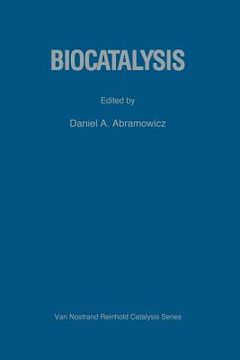Compartir
Biocatalysis (en Inglés)
Abramowicz, D. A. (Autor)
·
Springer
· Tapa Blanda
Biocatalysis (en Inglés) - Abramowicz, D. a.
$ 52.09
$ 54.99
Ahorras: $ 2.90
Elige la lista en la que quieres agregar tu producto o crea una nueva lista
✓ Producto agregado correctamente a la lista de deseos.
Ir a Mis ListasSe enviará desde nuestra bodega entre el
Lunes 17 de Junio y el
Martes 18 de Junio.
Lo recibirás en cualquier lugar de Estados Unidos entre 1 y 3 días hábiles luego del envío.
Reseña del libro "Biocatalysis (en Inglés)"
The action of enzymes fascinated mankind long before they were rec- ognized for the complex chemicals that they are. The first application of these remarkable compounds to produce ethanol by fermentation is lost to antiquity. Payer and Persoz (Ann. Chim. Phys., 53, 73 (1833ii)) appear to have provided the first step toward understanding this com- plex area when they reported the isolation of diastase in 1833. These workers showed that diastase could catalyze the hydrolysis of starches to sugars. Somewhat earlier Kirchhoff (Schwigger's Journal, 4, 108 (1812)) had shown that a small amount of dilute acid could hydrolyze a seemingly endless amount of starch to sugars. The genius of Berzelius recognized the commonality of these two observations in connection with a few other isolated observations and in 1834 coined the term catalysis to describe such actions. Professor Leibig was one of the giants of the chemical world in 1840. In addition to his own work, Liebig was training the world's next generation of chemists in his laboratory in Giessen. This cadre of chemists were very impressed by the master teacher so that is it only natural that Liebig's views should dominate with this next generation of chemists. Leibig was, in the 1830s and 1840s, developing his mastery of agricultural chemistry. The mechanism of putrefication was of great concern to Leibig, and he turned to the newly defined area of catalysis for an explanation.
- 0% (0)
- 0% (0)
- 0% (0)
- 0% (0)
- 0% (0)
Todos los libros de nuestro catálogo son Originales.
El libro está escrito en Inglés.
La encuadernación de esta edición es Tapa Blanda.
✓ Producto agregado correctamente al carro, Ir a Pagar.

